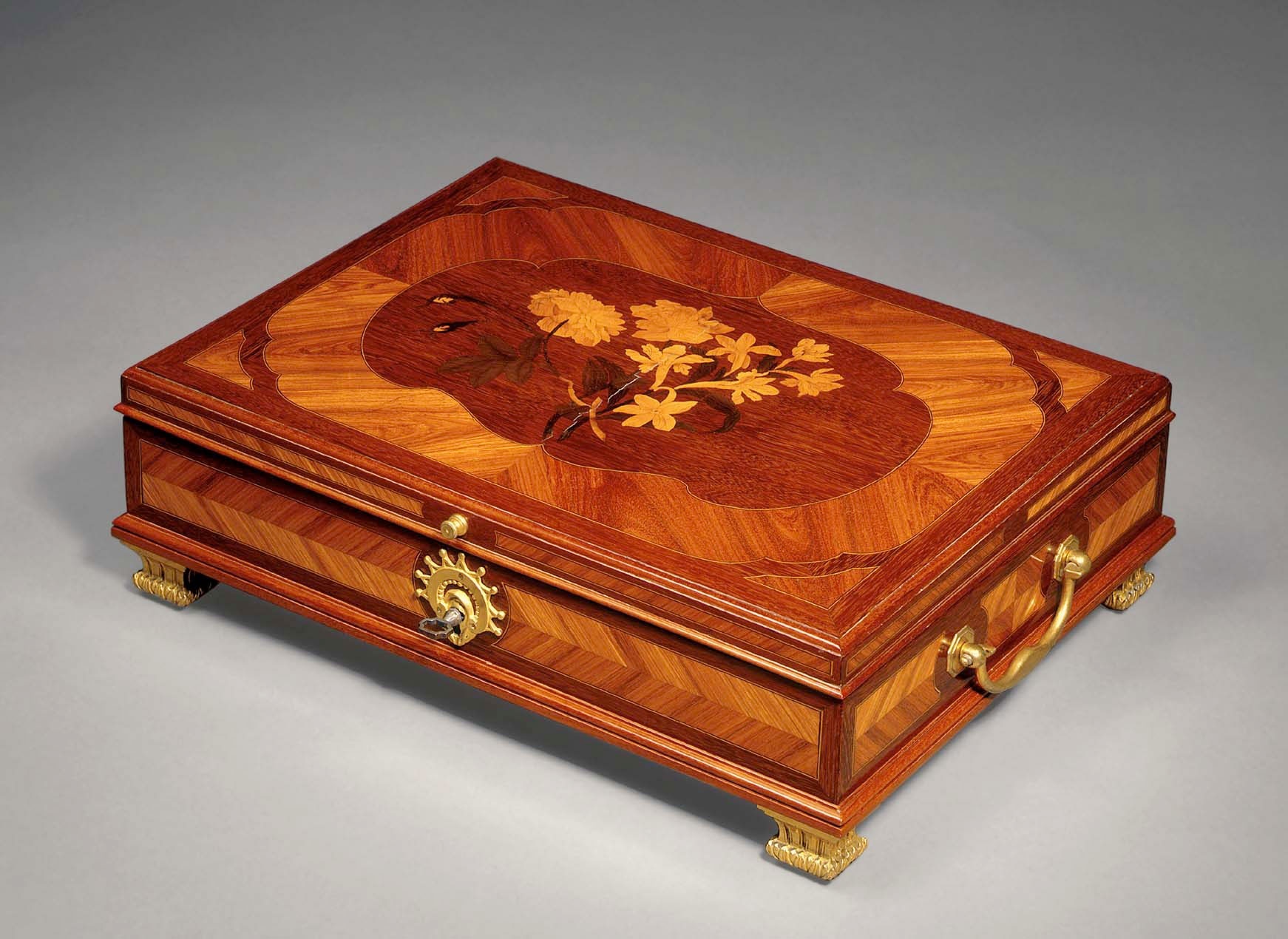
Circa 1760
A Late Louis XV Ormolu Mounted Marquetry Document Box, Attributed to Jean-Francois Oeben. Circa 1760

Jean-François Oeben
Jean-François Oeben, (1715- 1763) was an influential French cabinetmaker noted for his outstanding marquetry and for his ingenious mechanical devices Oeben came to France at an unknown date and in 1751 entered the workshop of Charles-Joseph Boulle, a son of the famous cabinetmaker André-Charles Boulle, in the Louvre. He was soon patronised by the king’s mistress Mme de Pompadour and in 1754 was appointed ébéniste du roi (“royal cabinetmaker”). Much of his work was done for the royal household. His royal warrant gave him the privilege of a workshop in the Gobelins factory, although he later moved to the Arsenal. His masterpiece is the bureau du roi, a desk for the king that he began in 1760 and was working on at the time of his death; it was finished by his younger associate, Jean Louis Riesener, who also married his widow.
Measurements
| DIMENSIONS | CM | INCHES |
|---|---|---|
| Width: | 47 | 19 |
| Depth: | 35 | 14 |
| Height: | 14 | 6 |